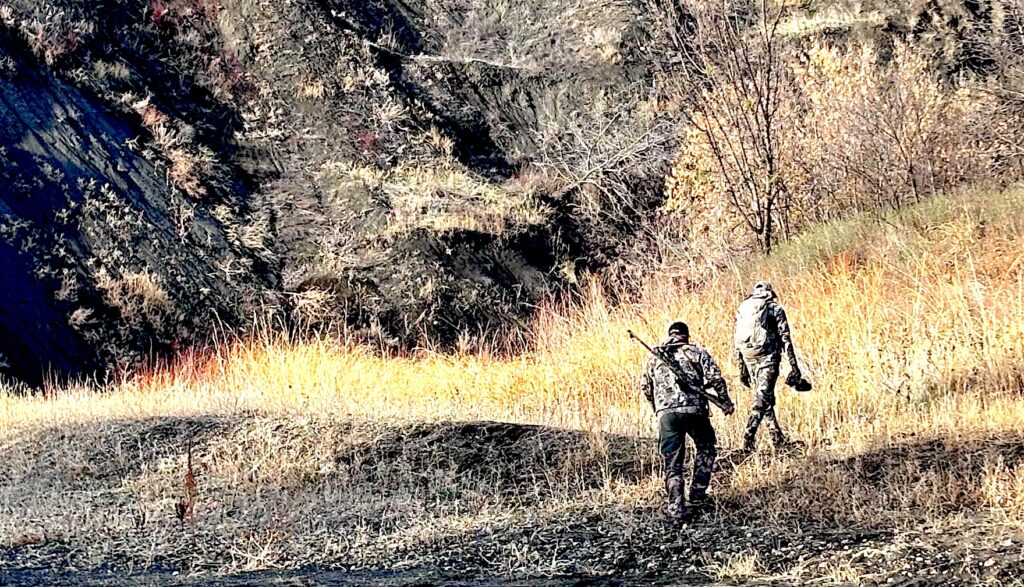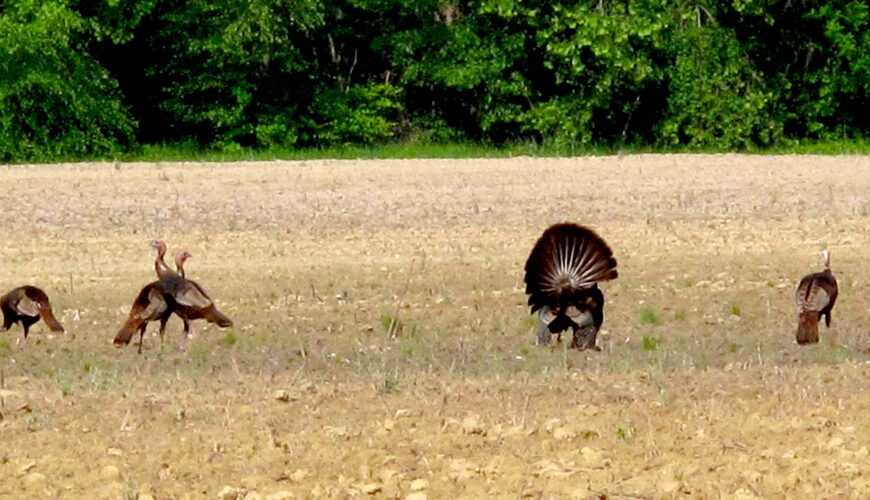Tactics
Make the Most of Early Season Deer Stands
October 6, 2025 •Doug Howlett
April 29, 2025
When you find yourself trying desperately trying to work a gobbler surrounded by hens, it can feel like you’re trying to crash a party you weren’t invited to and the popular kids are having none of it. Henned-up toms are notoriously tough to kill, but there are ways to flip the script and get one within shotgun range. Here’s how to break up the party and put that gobbler in your sights.
When a tom’s got a harem, your best bet is to ruffle the feathers of the lead hen. Start with basic yelps to get her attention. If she responds, mirror her calls, matching her intensity to provoke her much like you might work a young flock in the fall. Be ready to match her cut for cut and build up to almost aggressive yelps. The idea is to make her so agitated that she has to come check out the intruder, bringing the gobbler in tow. This tactic uses the hen’s territorial nature to your advantage. You’re not trying to call the tom—you’re trying to start a hen fight and bring her feathered audience along to watch.
This is where decoys can work wonders. A well-placed decoy spread can be a game-changer. Think about using a half-strut jake decoy right behind an upright hen to create a breeding scene. This visual can stir jealousy and aggression in a dominant tom, who won’t tolerate a young jake getting cozy with his ladies. Make sure your decoys are visible and within shooting range—I honestly prefer no more than 20 yards from where I’m sitting—so when the tom waddles angrily in, you’re ready to drop the hammer. If for any reason he begins to have second thoughts and hangs up, hopefully it will be within 20 to 30 yards max from the decoys, still in range for most modern turkey loads, especially Winchester Long Beard TSS, Federal Heavyweight TSS or Hevi-Shot Hevi-18. In thicker woods, you can skip the elaborate setup and run a single hen decoy tucked into a sunny opening where birds will see it just before it’s too late.

The author some years back with a midmorning gobbler he tagged after the hens had gone to nest. Doug Howlett Photo
Patience is key when it comes to hunting, especially turkey hunting. As the morning rolls on, hens will slip off to their nests, leaving the gobbler all alone. This is your golden window. Once his harem disperses, that tom will be much more interested in your calls. I’ve even left a spot and called in the area an hour or two later only to hear a bird gobble from where I’d been sitting earlier that morning and calling. The toms remember! Stick it out, and you might just find him wandering back, looking for company. A bird that wouldn’t even lift his head at 7:30 might be strutting into gun range by 10:15 like he’s been looking for you all morning.
If that gobbler is glued to his hens and not budging, you might need to make a move. Use the terrain to your advantage, creeping closer without spooking the birds. Using leafed out vegetation, hills, creek beds, whatever you can use to keep you hidden to move in closer. We used this tactic religiously just weeks ago hunting with Rocky Mountain Game Calls, Dryshod boots and Muddy Outdoors in South Dakota. This requires knowing the lay of the land and moving slow. By closing the distance, your calls become more convincing, like a hen on the move, and that tom might decide to investigate. You’re not stalking him—you’re just shaving off enough distance to make it personal, though there’s always a time and a place for an Alabama sneak, as long as it is legal where you hunt and you’re in relatively open country where hunters can identify each other more easily. You ALWAYS want to exercise extreme caution if calling while on the move.
Tight-lipped gobblers require a switch-up. Try gobbler yelps or jake sounds to challenge his dominance. Even a gobble with a shaker, a box call or if you can, with a tube call or diaphragm. This might be just enough to pull him away from his hens. Use this tactic sparingly, as it can also deter younger or less dominant birds. If the strutter’ already fired up and puffed out, a jake yelp followed by a soft hen cluck might light the fuse.

Use terrain to hide your movement and get into a better position to call in a flocked up gobbler. Doug Howlett Photo
Just like closing the distance and calling, if you know the landscape, you can also use ditches, creek beds and elevation changes get ahead of where he and the flock are working toward. Position yourself where you have a clear line of sight and good shooting lanes, ready for when the gobbler strolls into sight. It’s not always about calling harder or smarter—a lot of times it’s about just being where he and the flock want to be and being there first…in which case, calling may not even be necessary. For a flock that always seems to head away from your calls, this is often the only way you are going to seal the deal.
For the bold, fanning, or reaping as it is also called, can be highly effective. I’m going to be honest, it’s also potentially dangerous depending on where you hunt, may even be illegal (seven states either outright ban the practice or restrict it on public land) and is not without plenty of controversy. A local Virginia hunter was killed about 5 or 6 years back by his hunting partner when he was fanning. When I was editor of Turkey Callmagazine at the NWTF back in the early 2000s, I would’ve been fired if I even thought of running an article suggesting fanning. And I had guys approach me with the idea. It is nothing new.
But then outdoor television, more specifically, YouTubers and social influencers came along with algorithms that rewarded extreme action and risky scenes and suddenly “fanning” was all the rage and being covered by such mainstream publications as Outdoor Life, Field & Stream (Yeah, they used to actually print them in magazine form kids!) and Petersen’s Hunting (still a mag and a website). Regardless of where you stand on the issue, the tactic does work, though not all the time. But enough that it is honestly effective, and it does make for great video.
The tactic involves using a turkey fan or full-strut decoy to provoke a response from a tom. While it can draw in a gobbler fast, for some of the most exciting turkey hunting action you’ve ever experienced (we employed it on some of our hunts in South Dakota and shot several toms at 8 steps or less) it’s risky and should only be used in open areas with clear visibility—and never on public land. If you’re hunting private fields and know you’re the only one out there, it can put a tom in your lap. In a flock situation, it can also make otherwise nervous hens or jakes chill out until a gobbler strolls into range. But be smart, stay safe and don’t force it where it doesn’t belong. A turkey just isn’t worth the risk. See tips 1 through 6 for safer approaches to filling your tag on a henned up tom!
